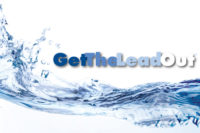The Canadian Institute of Plumbing & Heating (CIPH ) members are still very concerned about developing policies and standards regarding lead for plumbing products in Canada. Since the April 2010 Advocacy Link Update, two significant developments have occurred.
Currently in Canada, certified plumbing products are already required to conform to NSF 61 for material safety. The new NSF 372 standard is a method that could be used to demonstrate compliance to a 0.25% weighted average lead requirement. According to the CIPH, there is no regulation in Canada that requires compliance to this standard. However, the organization is in constant communication with all provinces and territories should any changes occur.
In the meantime, the Institute has received reports that some municipalities, building managers and school districts have begun to inquire on low-lead plumbing products to manage their local, site-specific lead concerns. CIPH has asked if you are aware of this type of activity to alert them immediately.
For more information on the new standard please contact NSF at 1-800-NSF-MARK .
Source: CIPH

